Chapter 10 PDF

| Title | Chapter 10 |
|---|---|
| Course | Critical Thinking |
| Institution | Edmonds Community College |
| Pages | 4 |
| File Size | 38.8 KB |
| File Type | |
| Total Downloads | 58 |
| Total Views | 146 |
Summary
Lecture 10...
Description
Chapter 10 Two Basic types of arguments: Deductive arguments Inductive arguments Deductive Arguments: Aim to show that the conclusion must be true Claim (implicitly or explicitly) that if the premises are all true, then the conclusion must be true. The goal: to conclusively establish the conclusion. Inductive Arguments: Aim to show that the conclusion is probably, though not certainly, true. Claim (implicitly or explicitly) that if the premises all are true, then the conclusion is likely or probably true (though not certain) The aim: to establish the conclusion with a high degree of probability, though with less than complete certainty. Validity: As deductive argument is valid if it succeeds in its aim of showing that its conclusion must be true if its premises are all true. Thus, a valid deductive argument is one in which the conclusion must be true if the premises all are true. Detecting validity: the intuitive test: Step 1: ask the following question if the premises were to be true, would it nevertheless be possible the conclusion is false? Step 2: if the answer is no, then the argument is valid. If the answer is yes, then the argument is invalid. Showing that an argument is invalid: The method of counterexample. A counterexample to a deductive argument is a description of a possible situation or circumstance in which the premises of the argument would all be true while the argument’s conclusion would be false. When you present a counterexample to someone’s deductive argument, you help the person see one way in which the premises of the argument could be true, although the conclusion is false, which shows that the argument is invalid. Remember that valid does not mean true. Some arguments are valid even though their premises are all false.
Some arguments are valid even though they have a false conclusion. Invalid does not mean false. Some arguments are invalid even though their premises are all true. Some arguments are invalid even though they have a true conclusion. Enter truth: Soundness: A deductive argument is sound if and only if: It is valid Its premises are all true. Common forms of deductive reasoning: Categorical arguments of various kinds Modus ponens Modus tollens Disjunctive syllogism Hypothetical syllogism. Examples of valid categorical arguments: All cats are mammals, No mammals are reptiles Therefore, not cats are reptiles. Some cats are pets All cats are mammals So some mammals are pets. Modus Ponens: If p then q P Therefore q Modus Tollens: If p then q Not q Therefore not p
Disjunctive Syllogism: P or Q Not p Therefore q Hypothetical Syllogism: If p then q If q then r Therefore if p then r Common forms of inductive reasoning: Analogical arguments Enumerative induction Generalization from a sample (a type of enumerative induction) Inference to the best explanation Analogical arguments: X and y are alike in many respect X has property of p Y is not known not to have property P Therefore, y probably has property P Enumerative Induction: The first crow is black The second crow is black The third crow is black Etc Therefore probably all crows are black. Inference to the best explanation: Facts in need of explanation are cited. Possible explanations are examined One explanation is selected as the best explanation, on the basis of standard criteria. It is concluded that this explanation is probably true.
Criteria for best explanation: Internal consistency External consistency Explanatory scope Explanatory power Testability Simplicity Fruitfulness Conservatism Caution: Strong does not mean true Some arguments are strong even though their premises are all false Some arguments are strong even though they have a false conclusion Some arguments are strong even though they have false premises and a false conclusion Cogency: An inductive argument is cogent if and only if It is strong Its premises all are true Two ways an ar4guemtns can go wrong: Flawed reasoning (from premises to conclusion) One or more false premises Two ways to effectively criticize an argument: Argue that one or more premises are false. Argue that the reasoning is flawed. Arguing for the opposite of the conclusion is never an effective way to criticize an arguments...
Similar Free PDFs

Chapter 10 quiz #10
- 3 Pages

Notes 10 - Chapter 10
- 5 Pages
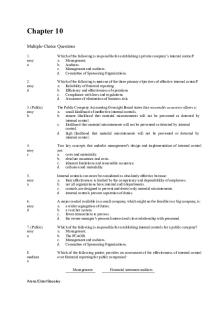
Chapter-10
- 19 Pages
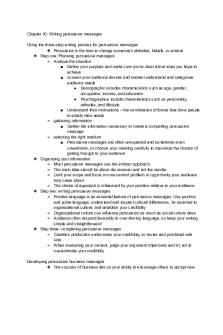
Chapter 10
- 5 Pages
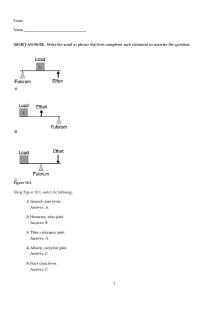
Chapter 10
- 14 Pages

Chapter 10
- 111 Pages
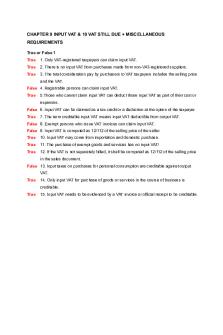
Chapter 10
- 16 Pages
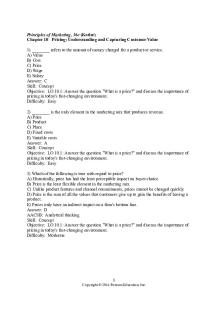
Chapter 10
- 47 Pages
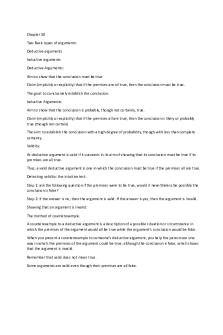
Chapter 10
- 4 Pages
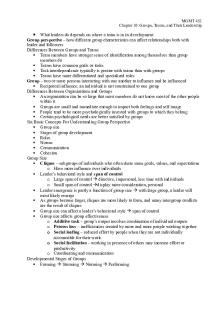
Chapter 10
- 5 Pages
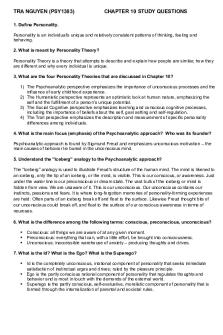
Chapter 10
- 6 Pages

Chapter 10
- 13 Pages

Chapter 10
- 10 Pages

Chapter 10
- 3 Pages

Chapter 10
- 22 Pages
Popular Institutions
- Tinajero National High School - Annex
- Politeknik Caltex Riau
- Yokohama City University
- SGT University
- University of Al-Qadisiyah
- Divine Word College of Vigan
- Techniek College Rotterdam
- Universidade de Santiago
- Universiti Teknologi MARA Cawangan Johor Kampus Pasir Gudang
- Poltekkes Kemenkes Yogyakarta
- Baguio City National High School
- Colegio san marcos
- preparatoria uno
- Centro de Bachillerato Tecnológico Industrial y de Servicios No. 107
- Dalian Maritime University
- Quang Trung Secondary School
- Colegio Tecnológico en Informática
- Corporación Regional de Educación Superior
- Grupo CEDVA
- Dar Al Uloom University
- Centro de Estudios Preuniversitarios de la Universidad Nacional de Ingeniería
- 上智大学
- Aakash International School, Nuna Majara
- San Felipe Neri Catholic School
- Kang Chiao International School - New Taipei City
- Misamis Occidental National High School
- Institución Educativa Escuela Normal Juan Ladrilleros
- Kolehiyo ng Pantukan
- Batanes State College
- Instituto Continental
- Sekolah Menengah Kejuruan Kesehatan Kaltara (Tarakan)
- Colegio de La Inmaculada Concepcion - Cebu
